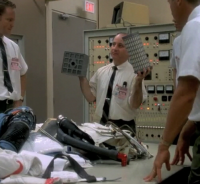This fall I’ve had the opportunity to lead many teachers on classroom walkthroughs in schools across the country. My approach is a “roving Socratic seminar” that uses brief glimpses of learning as a discussion starter for educators to reflect on their craft. For more on my walk through technique see my blog post ”Teacher-Led Professional Development: Using Classroom Walk Throughs“
One topic that always comes up on walkthroughs is something to the effect “… but don’t you have to teach the basics first, before you can expect students to be able to think at higher levels?” There’s a persistent assumption that Bloom’s taxonomy is a one-way street. Analysis, evaluation and creation can only take place after a solid foundation of basics have been “installed” into the student’s knowledge base.
While our students have been conditioned to “learn the basics – then solve the problem,” that’s not how life always works. Most often we are confronted with problems that force us to go back and discover underlying foundational elements. Car won’t start… now what?
Watch an infant getting into everything in the kitchen and you’ll realize that kids are flexible learners, capable of moving fluidly between the basics and the problem. Every time our students play a new video game they confront a new environment with a unique set of interactions constrained by rules. Most often they have to discover how the game is played in a manner that mimics the scientific method – developing and testing hypothesis against their growing understanding of rules, functions, obstacles, rewards that underly the process of the game. Problem first, then basics.
When designing a lesson, teachers need remember that Bloom’s taxonomy is not a one-way street. It has multiple pathways and entry points – knowledge can be put into practice in a problem and a problem can be used to generate a body of knowledge.
Need a good example of problem-based learning in action? Use this scene from “Apollo 13” as your walkthrough discussion starter. As you watch the clip think about the interaction of the problem and the basics.
- Situation: An explosion forced the crew to shut down the command module and use the lunar module as a “lifeboat.”
- Problem: They needed to jury-rig a carbon dioxide filtering system for the lunar module.
- Understanding the basics: What’s available aboard the space craft and how can it be used to modify the filtering system?



